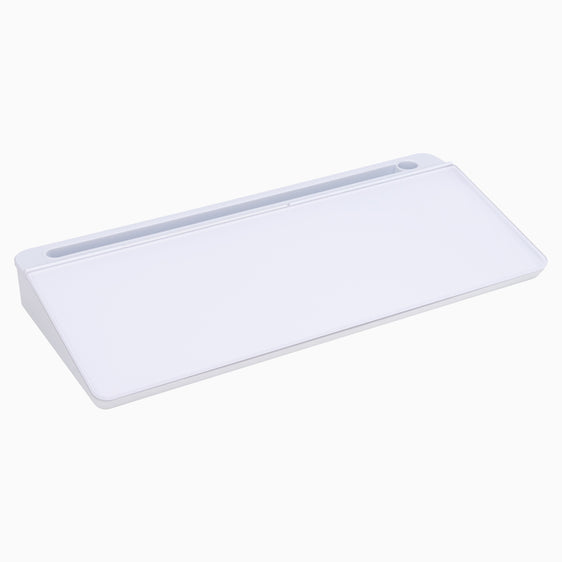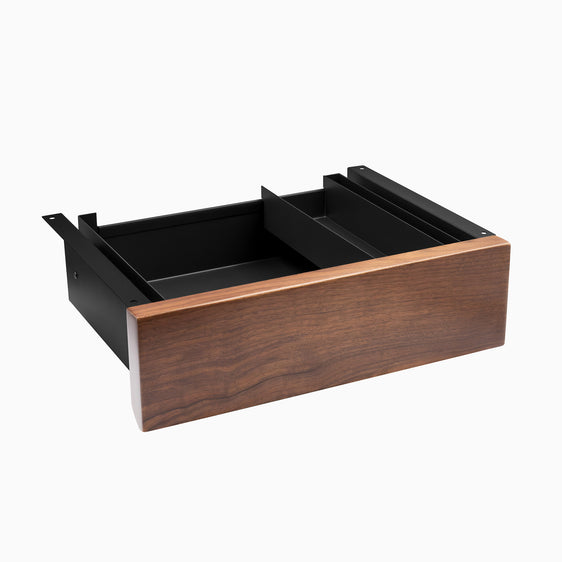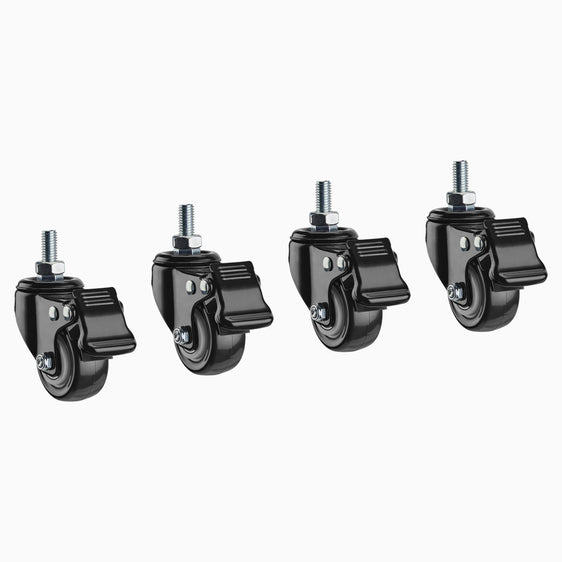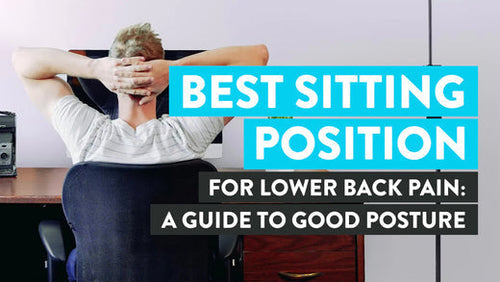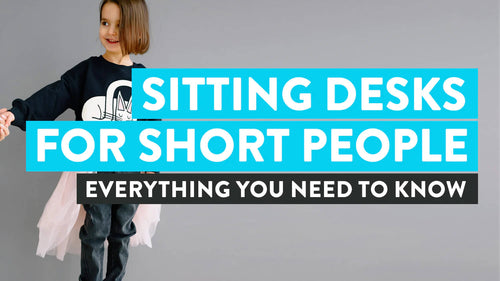
News
Choosing The Best Office Chair: An Ergonomic Guide
Hayden AdamsChoosing the best office chair might be more important than you think. In the modern Canadian economy, where the shift to permanent remote and hybrid work is firmly established, ensuring you are in the correct posture is crucial for long-term health and productivity and for preventing common issues like back and neck pain.
The leading cause of these problems is poor work posture. With the correct ergonomic office chair and a little understanding of the ergonomics involved, these problems can be effectively prevented.
So how, then, do you choose the best ergonomic chair, and what should you be looking for? Below, we explain everything you need to know to choose the best chair for you.
Defining Ergonomic Chairs
Ergonomic chairs are designed to do more than just provide a place to sit; they actively participate in enhancing the sitter's health by promoting correct posture. These office chairs tend to uphold the natural 'S' contour of the back, reducing spinal stress and pressure on the pelvis. The adjustable backrest in ergonomic chairs aligns with the curve of your back, providing excellent spinal support. In simple terms, they are designed to fit you, rather than you adjusting to fit them.

Do ergonomic chairs make a difference?
Yes, indeed! Ergonomic chairs significantly differ from traditional ones by providing complete back support, mirroring the natural curvature of your spine. What makes an office chair ergonomic is its ability to support proper posture, reduce pressure on key areas, and adapt to your body's natural movements. This not only reduces the likelihood of back pain but also allows for a reclining function that exceeds the usual 90 degrees of regular chairs. Such features highlight the ergonomic chair benefits, including enhanced comfort, better body alignment, and improved focus during long work hours. These chairs are essential for maintaining ergonomics using a computer, ensuring that your body remains supported and strain-free throughout the day.
Who really needs an ergonomic chair?
In truth, a variety of individuals can take advantage of these chairs, especially those who work in a sitting position. From office employees to assembly-line workers and data-entry operators, many report episodes of back pain, muscle soreness, and common aches. A high incidence of health issues like varicose veins, neck stiffness, and leg numbness among seated workers indicates the benefits of using ergonomic chairs for maintaining health in the workplace.
Which Chair Is Best For The Office?
To begin choosing the best office chair for you, first of all you need to consider how you use it and what you use it for. For the contemporary professional—whether setting up a dedicated home office or kitting out a corporate space—the best choice balances maximum adjustability, premium materials, and a commitment to health.
Best Chairs for 8-hour Occupations
If you are spending a standard workday (or more) seated, your chair must be engineered for intensive, prolonged use. These models represent the best of Desky's ergonomic line for supporting long hours and promoting health:
Desky Pro+ Ergonomic Chair Premium, fully customisable support with Synchro-Tilt Plus.
The Ultimate Investment: Users needing maximum adjustability, superior durability, and a dynamic recline mechanism for all-day comfort.
{{ spec_pro_plus_chair }}
Desky Elite Ergonomic Chair Feature-rich mesh with seat depth and 3D armrests.
The Value Workhorse: Workers seeking advanced ergonomic features (like Synchro-Tilt) at a budget-conscious price point without compromising adjustability.
Desky Pulse Supportive Desk Chair High-level adjustability and customizable headrest.
The Daily Driver: Users seeking a robust, reliable chair with excellent lumbar support and a sleek profile for daily 8+ hour use.
Desky Pinnacle Executive Office Chair High-end materials and polished aluminum base.
The Executive: Users who need premium support and a luxurious feel, perfect for a high-end office or boardroom setting.
{{ spec_pinnacle_executive_chair }}
Desky Evoque Low Back Office Chair Modern, minimalist design with adaptive backrest.
The Style-Conscious: Individuals prioritizing design aesthetics for their home office, offering great comfort and multiple color options in a clean, contemporary form.
What Is The Best Ergonomic Office Chair?
Choosing the best ergonomic office chair can be a complicated business, so we've listed the key things you should be looking for when selecting an office chair.
Chair Seat Material
The material affects padding, support, and crucial airflow for comfort during long hours.
- Breathability is Key: Opt for materials that allow air circulation to keep you cool and prevent discomfort.
- Mesh vs. Cushion: High-tensile mesh provides superior airflow and firm support, while quality foam cushioning offers a soft, supportive feel.
Height Adjustable Headrest
A headrest is vital for supporting your neck and preventing the common tendency to lean forward into your workstation.
- Neck Strain Prevention: Properly aligned headrests reduce strain on the cervical spine by keeping your head in a neutral position.
- Adjustability: Look for headrests that can be adjusted in height and angle to support your unique head and neck curve when reclining.

Adjustable Backrest
The backrest must conform to the natural 'S' curve of your spine to reduce pressure.
- Mechanism: Should allow you to adjust the angle and tension to maintain proper posture while working or reclining.
- High vs. Low Back: High-back chairs (like the Vanguard) are ideal for full spinal, neck, and shoulder support. Low-back chairs (like the Evoque) are great for highly mobile users, focused task work, or design-conscious spaces.
💡 Average height of backrests
Standard back height hovers around 32 to 34 inches, which comfortably supports a wide spectrum of users. However, office chairs regularly offer a wider range in back height adjustment to accommodate different body shapes and sizes.
💡 Best height for backrests
Back support height immensely affects the comfort of those seated. A full shoulder support backrest, such as found in car seats and ergonomic office chairs, measures in at about 26". This size accommodates a comfortable scope ranging from the 5th to the 95th percentile of people.
Incredibly, backrests with heights as diverse as 5, 7, and 9 inches have been found to be equally effective. The depth of the lumbar curve on the backrest of the chair ideally stays between 0.6" and 2.0”.
Adjustable Lumbar Support
This feature is arguably the most critical for lower back health. It supports the natural inward curve of your lower spine (the lumbar region).
- Active Support: The best chairs offer adjustable lumbar support that moves up/down and in/out to fit your specific lower back curve.
- Preventing Pain: Proper lumbar support reduces stress on the discs and ligaments, directly preventing chronic lower back pain.
💡 Is it good to have lumbar support for an office chair?
Lumbar support in the office chair is highly beneficial. This support helps create a healthy posture by effectively bridging the gap between the seat and the lower back's inward curve. To ensure your lower back is supported while using an office chair, make sure that your backside touches the chair's back, coupled with a cushion that allows a slight arc in your lower back. This arc prevents slouching, lessens strain, and keeps your energy levels stable.

💡 How to add lumbar support to chair
Though many chair models come with built-in lumbar support, you can improvise if yours doesn't. Various special cushions and pillows exist specifically for this purpose. Alternatively, a simple rolled-up towel placed at the lower back can be just as effective. However, always ensure the support maintains the spine's natural curve and doesn't force it into awkward angles.
Adjustable Armrest
Armrests reduce strain on your shoulders and neck by allowing your arms to rest naturally.
- Goal: Armrests should be set so your elbows are at a 90-degree angle to the keyboard, with your shoulders relaxed.
- 4D Adjustment: Look for 3D or 4D armrests that adjust Height, Width, Depth, and Angle for maximum customisation.
- Armless Option: Armless chairs are better for mobility and playing instruments (like guitars), but they provide less ergonomic support for desk work.
💡 Are armless chairs better?
Armelss chairs provide users with a greater range of motion and the freedom to sit in various positions. More space is a significant advantage when you need to move or switch tasks frequently in a dynamic work environment. While these benefits are undeniable, keep in mind that armless chairs may not be the best option for everyone.
Employee requirements and tasks that involve extended periods of sitting or maintaining stability should also be factored in. According to NIH research, workers may experience discomfort and musculoskeletal disorders from improper sitting positions.
💡 Disadvantages of arm chairs
While the benefits of armed chairs are evident, certain potential cons require consideration. Some people find the armrests hinder their ability to move freely. Also, armrests that are not adjustable can exacerbate bad posture if they do not allow a person's shoulders to remain relaxed and their elbows to bend at a comfortable angle. Arm chairs typically demand more space than their armless counterparts, which can be a downside in smaller offices.

Height Adjustable Seat
This is the most basic, yet essential, adjustment.
- The 90-Degree Rule: Adjust the seat height so your feet rest flat on the floor (or a footrest) and your thighs are parallel to the ground. Your knees should be at a 90-degree angle.
- Mechanism: This should be easily controlled via a hydraulic gas lift. This is the standard for quick, smooth, and reliable height control.
Seat Depth
Also known as a 'seat slider,' this feature allows the seat pan to move horizontally (forward/backward).
- The Three-Finger Rule: The correct depth leaves 2–3 inches (about three finger-widths) of space between the back of your knees and the edge of the seat.
- Benefit: This prevents pressure on the back of your knees, which can restrict circulation.
Adjustable Tilt
The tilt mechanism controls how far and how easily the backrest and seat pan recline together.
- Synchro-Tilt: A premium feature where the backrest reclines at a higher ratio than the seat, opening your hip angle for better posture while leaning back.
- Tilt Lock: Allows you to lock the chair's tilt in a specific, comfortable angle.
360° Revolution
- Function: Standard swivel feature that allows the chair to turn freely without moving the base.
- Efficiency: Crucial for easily accessing different parts of your workspace without straining your body.
Caster Wheels
- Material: Ensure the wheels are appropriate for your flooring. Soft wheels for hard floors, hard wheels for carpet.
- Mobility: Essential for effortless movement, especially within a small home office setup.

Footrest
A footrest can aid in switching postures, efficient weight distribution, and relief from such strains. As demonstrated by trusted ergonomic resources, positioning your feet flat on a footrest abates leg tension and inspires improved posture.
- Purpose: Recommended if you cannot achieve the 90-degree knee/hip angle with the chair lowered completely, or for short users.
- Active Comfort: Footrests (like the Desky Classic Foot Rest) can provide gentle rocking to encourage movement and improve circulation.
💡 Should you use a footrest at your desk?
Long sitting hours might affect health adversely by compromising the posture and circulatory system. Short stature individuals might seek the benefits of using a footrest to ensure their feet remain in a steady position.
Choosing a footrest at the desk bolsters healthy circulation in the legs and has been researched for ergonomic advantages, as authenticated by the Canadian Centre for Occupational Health and Safety.
💡 Disadvantages of footrests
Footrests could pose minor drawbacks. For instance, footrests made of rigid materials might have sharp edges, causing discomfort. Taller individuals might find the majority of footrests insufficient in height.
Mesh Back For Support And Comfort
Mesh office chairs have surged in popularity due to their unique benefits, especially in climates where airflow is essential. However, the quality of the mesh is paramount for ensuring long-term ergonomic support.
- Material Benefit: Mesh is the ideal material for those who run hot, as it provides continuous ventilation.
- Support Quality: High-quality mesh is taut and supportive, molding to your back without sagging, unlike cheap mesh fabrics.

What Is The Best Office Chair For Sitting Long Hours?
The best office chair for sitting long hours will be the one that allows you to find the best position for you, where the neck, back, and arms are all correctly supported. So, there’s no one answer to this question.
Also, this will be defined by the type of work you do. An architect will most likely need a different chair than an administrator, for example. What is certain, though, is that you need a chair that is ergonomically designed to provide the support you need.
That means a chair that is fit for purpose but allows the flexibility to find the seating position that best suits your frame. If you are seated for most of your workday, correct lumbar support and maintaining the correct angle and level to your desk, keyboard, and monitor are crucial.
Criteria For Choosing A Chair For Long Hours
-
Adequate Lumbar Support: The chair should support the lower back and, ideally, have adjustable lumbar support.
-
Adjustable Sections: Chairs with adjustable heights, armrests, and backrests are ideal, as they can be customized to your needs.
-
Swivel Base: The chair should ideally swivel to prevent strain from reaching different parts of the desk.
-
Material: Fabric should be breathable to prevent the chair from becoming hot after long hours of sitting.
Best Chairs for Lengthy Streaming Sessions
If you enjoy streaming, chairs that provide superior comfort over long periods will benefit you. While comfort is crucial, durability and flexibility should also be considered. A quality chair possessing these attributes ensures your comfort throughout streaming sessions.
Different Types Of Office Chairs

Ergonomic Office Chairs
This describes a wide range of chairs but lets you know that the chair was designed with supporting the human frame and ease of use foremost in the designer's mind. Ergonomic chairs are the best for supporting your frame and preventing strains and injuries, and they make sure you remain healthy and productive.
{{ spec_elite_chair }}
Mesh Office Chairs
Mesh backed office chairs look great and allow you to stay cool. The breathable mesh material allows for airflow, which is crucial on a long day of sitting, especially in summer. A mesh backed office chair will also protect your back, so there is no compromise on your long term wellbeing.
{{ spec_adj_high_back_mesh }}
Executive Office and Boardroom Chairs
Often high back, and a little fancier in design, an ergonomic executive chair offers all of the support and ergonomic features of the office chair, but with a little more luxury. Boardroom chairs will most often be found in meeting spaces, but just because they are not technically workstations doesn’t mean ergonomics are not important. Far from it.
Sitting all day in meetings can be just as bad for the body. This is why it is important that boardroom chairs are easily adjustable, so everyone using them can find a comfortable position.
Drafting Chairs
Architects or designers often work in an upright position at drafting tables or a standing desk, but this doesn’t mean they don’t need the same level of support in the office. Drafting chairs provide lumbar support and back support while allowing for a high work position. Draft chairs normally feature a footrest so the user can remain comfortable at higher settings.
Task Office Chairs
Task chairs are often the most adaptable and flexible chairs, designed for spaces where they might be used by more than one person. In shared workspaces and hot desking environments, the task chair really comes into its own. It allows for nearly anyone to find a comfortable position easily. Although often not the fanciest of chairs, the task chair's awesome functionality means it is one of the most commonly seen workplace chairs.
Office Stools
Office stools are a nice addition to a standing desk setup. They allow you to take a break without going all the way to a seated position. These adjustable sit stand stools are also designed to keep you active, with some offering a wobble feature that activates your core and keeps you moving throughout the day.
{{ spec_pro_active_stool }}
Gaming Chairs
Chairs built for gamers are becoming more commonplace, even in the office as trendy start-ups look to gamify their office space. Gaming chairs have evolved to be some of the most highly customisable.
Orthopedic Chairs
Orthopedic chairs are a subtype of seating furniture mainly engineered to provide optimal support for your body, focusing primarily on the spine and back. Primarily, the goal of these chairs is to promote effective posture, reducing the risk of muscle strain and joint pressure. This is especially important for people who spend considerable time sitting, such as office employees, students, or individuals with particular health conditions.
Active Sitting Chairs
Active sitting chairs encourage micro-movements and dynamic posture changes. They work by positioning the body with an open hip angle to align the spine and engage the core. These tools are powerful for short bursts of focused work but are typically used as an alternative to a traditional office chair, not for all-day use.
{{ spec_kneel_chair }}
Best Chair Type for Prolonged Seating
When searching for the utmost comfort during long periods of sitting, one type of chair stands out: the ergonomic chair. These chairs are designed for comprehensive adjustments to suit your body's optimum comfort.
Regardless of your height, these chairs can be adjusted to ensure your legs and back are adequately supported, a critical feature for taller individuals. An authoritative source cites ergonomic chairs as the best for mitigating strain during lengthy sitting periods.
How Much Should You Pay for an Ergonomic Chair?
The cost of ergonomic office chairs greatly varies, typically falling within the $200 to $800 bracket. This price range is dictated by features affecting comfort and posture during extended work hours. Top-tier models that offer extensive adjustability may exceed the upper range.
Is it worth getting an expensive chair?
Premium ergonomic chairs come with a combination of extended warranties, strong weight capacities, and suitability for lengthy use periods. Let's take, for example, chairs like the Desky Pro + Ergonomic Chair. This chair offers a range of features that make it worth the investment, such as:
- Height-adjustable arms, back, and headrest that allow you to customize the chair to your body shape and size.
- Breathable mesh back and fabric seat that provide optimal cooling and comfort for long hours of work.
- Synchro-tilt mechanism that allows the seat and backrest angle to change together automatically, offering perfect support to your body as you go from upright to reclining positions.
- Waterfall edge seat that reduces pressure on the back of your legs and improves blood circulation.
- Sturdy five-caster wheel base that enables easy repositioning and mobility.
- Capacity to support up to 330 lbs of weight and is suitable for users up to 6’4" tall.
- Available in black or white finishes to match your workspace aesthetic.
Is An Ergonomic Chair Worth It?
Ergonomic chairs allow you to easily find your most comfortable position, boosting your sense of wellbeing and your productivity in the workplace (or home office!). They also provide support to the areas of the body that suffer most from extended periods of sitting. So, if you want to protect your health in the long term and remain happy and productive into the future, investing in an ergonomic chair is definitely worth it.
Frequently Asked Questions
Why do some office chairs not have a headrest?
Adding a headrest to an office chair isn't always beneficial, according to some ergonomic professionals. It may restrict neck mobility and limit the frequency of posture changes, potentially causing stiffness and discomfort. Thus, the absence of a headrest on some ergonomic chairs is by design intended to promote postural versatility and movement during the workday.
What type of chair is best for posture?
When it comes to boosting posture, not all chairs meet the mark. An ideal chair for maintaining good posture is versatile, catering to various body shapes and sizes. Along with adjustable lumbar support, these chairs, perfect for posture, incorporate other essential features.
This adjusts to your lower back, curving away from the back of the chair, promoting posture alignment. It's like the chair is giving your back a comforting hug; this encounter can foster ease, comfort, and proper body alignment.
How can I sit in an office chair without back pain?
To alleviate stress on your back, adhere to the following seating guidelines:
- Sit close to your desk with your head upright.
- Keep your upper arms parallel to your spine and your hands at 90-degrees on the work surface.
- Position your legs at 90 degrees, directly above your ankles.
What type of chair should be used in a workplace?
A workplace chair should offer robust support for various seated postures. Inclusion of an easily adjustable backrest and flexible lumbar support is imperative to cater to lower back support.
A study published in the NIH affirms the importance of adjustable lumbar support in preventing work-related musculoskeletal disorders. Ergonomic chairs, such as the Desky Elite Ergonomic Chair are designed for just this purpose.
What is the best ergonomic position for office chairs?
Choosing a chair that supports your spine is crucial for maintaining a healthy posture. Here is a quick guideline:
- Adjust the chair's height so that your feet rest flat on the ground or on a footrest, with your thighs parallel to the floor.
- If your chair has armrests, ensure that your arms comfortably rest on them, with your elbows aligned with your body and your shoulders relaxed.
Following this guidance will encourage you to maintain a good posture, reducing strain and long-term health risks.

